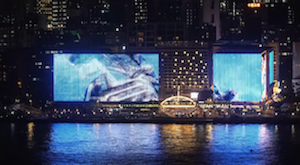Solo show
October 2018
Beita Gallery, Jerusalem
Sleepery Reality

This is an invitation to see the entrance to the exhibition as a wink, as an exposure to the thin veil that covers the eyes, which, when removed, reveals layers existing in parallel to familiar everyday life. Or on the contrary: It’s an invitation to plunge into a dream; it is art that creates a delusional space, free and imagined, wherein new possibilities without true accessibility are disclosed. Or perhaps this is reality without the added dimension of time, where we allow history to flow freely and change at will.
Slavin arranges the exhibition space, marking it with bright red lines stretched back and forth, up and down. However, the gaze that searches and which is revealed in his work, shifts eastwards. The journey begins via the computer screen set before him; the social media networks to his right; the gaming and 3-D world to his left. Yet he looks towards the East. Whether it be the Judean Desert or back in time to the ancient East, which is embodied in the works of “Ursulimum” and “Variations Amud Anan,” Slavin continues even further, towards the Far East, which preoccupies him for a span of years. It is expressed in “In the Moment” and “The Floating Life,” and even more so, in his new film, A Call for Dreams, which will be screened twice during the course of the exhibition (31/10, 21/11 at 20:00).
A frenetic sequence of events emerges in the video installation, “In the Moment,” which originates from Slavin’s Instagram account. A hash of personal images, photographs of scenes – both local and abroad – posters, garbage, urban glimpses, and images. The frenzied tempo, which is more than the eye can accommodate, and the plethora of random images reflect the personal documentation of every day fleeting moments, aimless surfing experiences on the internet, the angst of FOMO (fear of missing out), the personal and mass sharing that occur on social networks, and information lost from sheer excess. The artwork presents itself as a compilation of eight screens seen from Jaffa Street only, whether they be scenes through the windows of the light rail or that of passersby. “In the Moment” constitutes the physical and conscious veil of the exhibition, where the same reality is presented as a mask and drug of instantaneous commercial stimuli, creating a deluge as they flood and overwhelm us. It seems that to decipher the secret code concealed within them, one needs to shift towards a mind frame of darkness, slow down, close the eyes, and reopen them in a different world.
In the dark gallery, Red Lines flicker and quiver in a random, irregular rhythm: A display that transforms the sounds from outside the gallery into an expression of the lights inside. This secret connection, between outside and inside, compares the sounds heard from the street to a secret message, a warning, confines which are emphasized in red, not to be traversed, as if they were war zones.
The three-channel video installation, ” Variations Amud Anan,” displays snippets of the Judean Desert and the Negev, alongside photographs of quarries and constructions sites, some of which are viewed though security cameras. From time to time, the desert journey reveals palaces, shrines, as well as unique structures that resemble an assemblage of ruined houses. Infrared rays beam from the primeval landscapes, penetrating and contaminating the ancient spaces with a threatening and intrusive presence. The rays gravitate towards the viewer. They look at him as if his presence at the exhibition traverses the confines.
Amud Anan (the Pillar of Cloud) in the Bible was a divine, symbolic display, that guided and preserved the way for the Israelites in the desert. Amud Anan is also the name of the military operation that took place in the Gaza strip in 2012 (Operation Pillar of Defense), and the rising pillars of cloud in the artwork resemble clouds of dust in the aftermath of an explosion. In this way, the title also possesses ironic undertones, indicating an identification between the forceful human mechanism, and the malevolent force of the divine working for the greater good. The desert appears as a place of desolation and machinery in a world from which the human presence has dissipated, as if it were inhabited until a short while ago, but no longer is. In a world such as this, new images surface, such as in “The Floating Life” – different interactions between organs and particles of digital entities. Man, beast, machine, and general sketches meet, connect, and separate, until an associative and troublesome sequence of images is created. A collection of fragments of information, embedded with foreign words and excerpts of animation, as if it were a daydream – or even a nightmare – of computer software.
The quest for direction in a world without meaning and with no way out, appears in Ursulimum – as a futuristic journey to the ruins of pre-biblical Jerusalem – Ursulimum as it appears in an Egyptian inscription from 1300 BCE. A young boy in an astronaut suit sets out on a journey that could take place in the future, or perhaps it is a current version of the epics, as described by explorer-heroes in the local cultures of days gone by. The meeting between structures, sounds, and technology proceeds to the meeting between caves, layers of archeology buried beneath the earth, and present-day images, creating a sense of a distorted timeline, that meets as a circle of past and future. Strange and impossible geographical spaces, liturgies of light that allude to rituals of different faiths, and on the periphery of it all, a lone man in his quest for blind discovery.
Avital Naor Wexler, Curator















